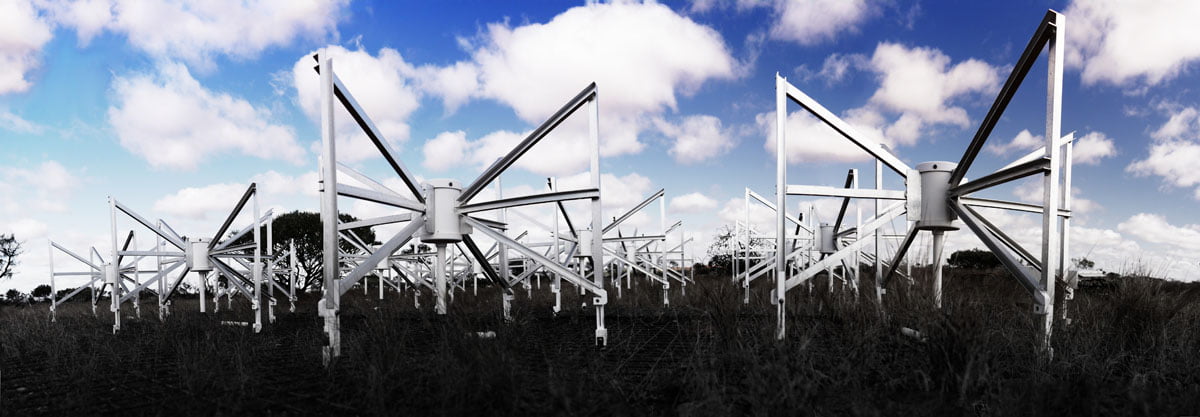The MWA will survey the sky more thoroughly and deeply than ever before in an attempt to detect very faint signals from the Epoch of Reionisation – a little understood early era of the Universe’s history, occurring within the first billion years after the Big Bang, when cool atomic hydrogen gas was heated and ionised by the first light-emitting objects in the Universe.
As recently published in The Astrophysical Journal, researcher Dr Cathryn Trott and her team at the International Centre for Radio Astronomy Research have proposed a more accurate method of understanding bright foreground noise that may be obscuring scientists’ views of these very faint signals.
They use data from the MWA in a new way that allows them to study and reduce the effects of systematic errors in the data processing pipeline – that means, they increase the sensitivity of the instrument by statistical analysis.
“As with everything, there is a balance to strike; the more sensitive our telescopes, the more signals we are picking up – but not all signals are of the desired cosmic origin but are actually a contamination of our data from the bright Universe we see today,” Dr Trott said.
“On the eve of switching on these new telescopes, we want to make sure we have the best data analysis tools at hand to clean up the inflowing data, one of which is presented in our recent publication.”Dr Trott said previous work wasn’t able to define the precise impact of the bright foreground signals on the ability to measure the Reionisation signal.
“As a community, we are beginning to develop some really sophisticated methods for finding the needle in the haystack – detecting this crucial period in the early Universe – and the timing is perfect with the arrival of these exciting new telescopes,” she said.
The calculations presented in her paper also allowed Dr Trott to evaluate the performance of the actual telescope designs in minimising noise and to predict optimised layouts depending on the experiment of interest.
This research was conducted at the Curtin University node of the International Centre for Radio Astronomy Research, with team members being part of “The Evolving Universe” theme of CAASTRO.
Publication
Trott, C.M., Wayth, R.B., and Tingay, S.J. 2012 in The Astrophysical Journal, 757, 101
The impact of point source subtraction residuals on 21 cm Epoch of Reionization estimation
Contacts
Dr Cathryn Trott, CAASTRO / ICRAR, Curtin University
Tel: 08 9266 1306
Email: cathryn.trott@curtin.edu.au
Dr Wiebke Ebeling, Outreach, CAASTRO / ICRAR, Curtin University
Tel: 08 9266 9174
Mobile: 0423 933 444
Email: wiebke.ebeling@curtin.edu.au
Megan Meates, Public Relations, Curtin University
Tel: 08 9266 1306
Mobile: 0401 103 755
Email: megan.meates@curtin.edu.au


